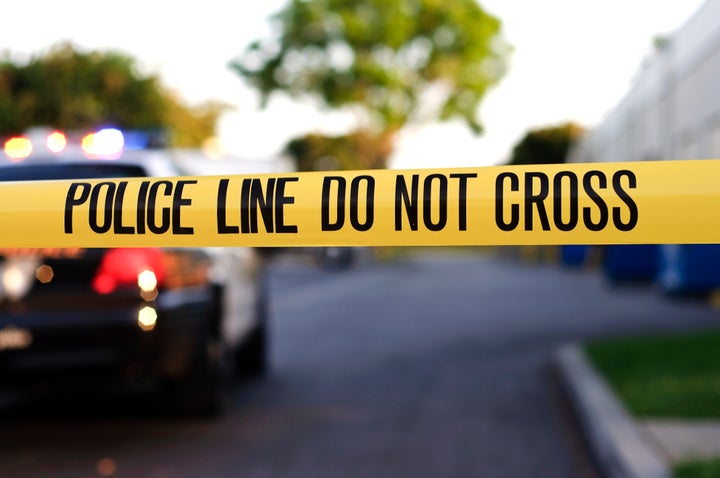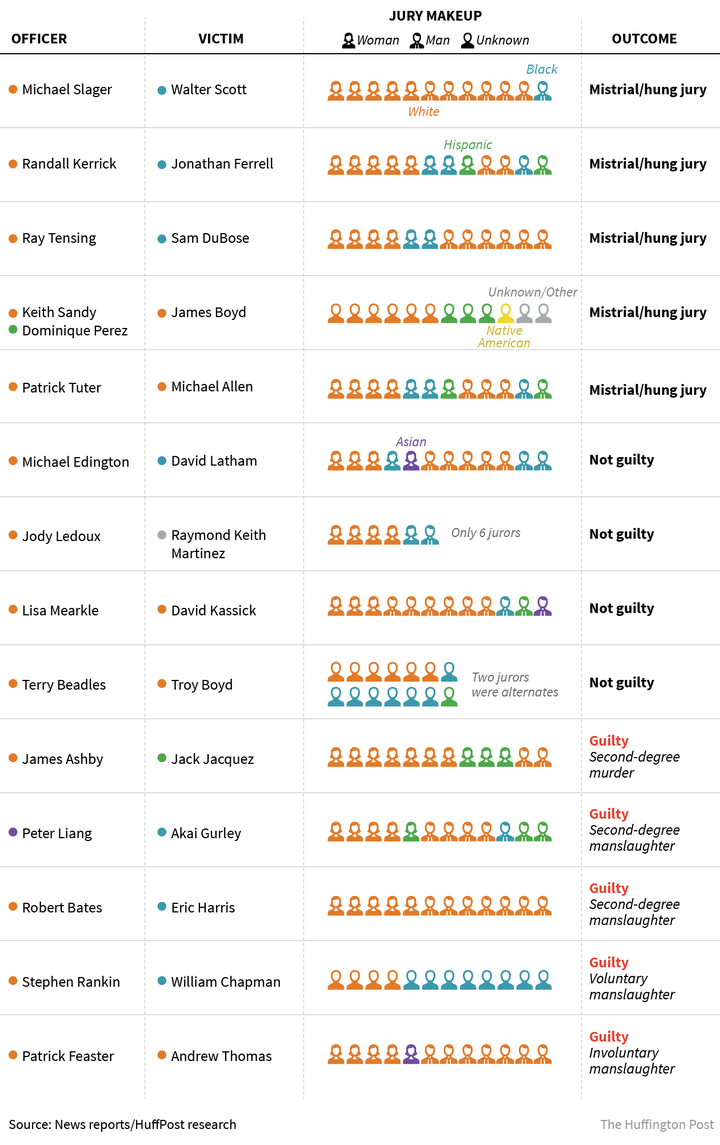
A Dallas County, Texas, judge on Monday declared a mistrial in the case of a former Garland police officer charged with manslaughter in the 2012 fatal shooting of an unarmed motorist.
The 12-person jury began deliberating on Thursday to determine if Patrick Tuter, who is white, had acted criminally in the slaying of Michael Allen, a white man who had led police on a high-speed chase. Tuter fired 41 shots at Allen’s vehicle.
Seven of the jurors in the case were white. The panel’s racial demographics and the outcome of the trial are part of an ongoing debate about how race influences the judicial process for police officers on trial for murder or manslaughter in on-duty shootings.
Prosecutors argued Tuter, now 36, had engaged in “reckless” and unlawful misconduct during the shooting, as police had already cornered Allen’s truck in a cul-de-sac when Tuter opened fire. Three bullets struck the 25-year-old driver.
Tuter has maintained that he believed Allen was armed, and that he used lethal force because he feared for his life following a pursuit that had exceeded speeds of 100 mph before ending in the Dallas suburb of Mesquite. Officers from the Mesquite Police Department, who investigated the shooting but only arrived on the scene after it had taken place, testified in favor of Tuter.
But other Garland police officers who witnessed the shooting testified against Tuter, claiming his actions were unnecessary. Tuter was the only officer who discharged his weapon during the encounter, and police reported that he had to reload twice amid the barrage.
“His fellow officers felt more fear from Tuter’s actions than from the person they were chasing,” special prosecutor Juan Sanchez told The Huffington Post.
Tuter was fired from the Garland Police Department in 2013, after an internal investigation concluded he’d violated numerous policies during the incident.
On Monday morning, the jury foreman told Judge Quay Parker that the panel remained deadlocked, with a handful of jurors favoring conviction and the rest supporting acquittal. Sanchez said most of the jurors who supported convicting Tuter were people of color.
With no hope of reaching a unanimous verdict, however, Parker announced a mistrial and dismissed the jurors. The prosecution will reconvene early next month to determine how to proceed, Sanchez said.
Efforts to prosecute officers for fatal shootings often fail, according to research by Philip Stinson, an associate professor of criminology at Ohio’s Bowling Green State University who has compiled nationwide data on the prosecution of officers facing murder or manslaughter charges for on-duty shootings since 2005.
Although most officers don’t face charges in these incidents, juries often side with officers when they do rule on cases like this.
“Jurors are often reluctant to second-guess the split-second life-or-death decisions of police officers in violent street encounters while on duty,” Stinson told HuffPost in a recent interview.
But the racial makeup of juries may also have an effect on the outcome of these cases. A HuffPost investigation published last week found that whites have been substantially overrepresented on juries in police shooting trials. Including Tuter’s case, majority-white juries have now decided 12 of the 14 police shooting cases since August 2014 ― when a Ferguson, Missouri, police officer shot and killed 18-year-old Michael Brown. (A grand jury ultimately declined to charge the officer, Darren Wilson.)

As with most of these police shooting cases, the racial composition of the jury in Tuter’s trial wasn’t consistent with local demographics. Whites represent around 30 percent of the population in Dallas County, according to census estimates, yet they made up nearly 60 percent of the jurors.
Although jury pools are supposed to reflect a cross-section of the surrounding area, there is no requirement to seat a panel that looks like the community it’s representing.
A 1986 Supreme Court ruling prohibits attorneys from excluding potential jurors based upon their race or gender, but critics say lawyers routinely circumvent these protections and use the selection process to assemble largely white juries that may be more likely to side with them.
These jury trends are particularly concerning in police shooting cases. Surveys show white Americans are more likely to express pro-law enforcement views than nonwhite Americans. White Americans are also less likely to be acquainted with or sympathetic to issues of race and policing that many see as integral to these cases.
Sixty-eight percent of white respondents reported having favorable views of local police in a poll released in early December, compared with only 40 percent of African-Americans and 59 percent of Hispanics. In the same survey, just 35 percent of whites said police are too quick to use lethal force, compared with 73 percent of African-Americans and 54 percent of Hispanics. And 64 percent of whites were highly confident that their local police departments treat all racial groups equally, a position shared by just 31 percent of African-Americans and 42 percent of Hispanics.
With just a few of these police shooting cases going before juries each year, it’s still impossible to discern a clear correlation between the racial makeup of a jury and the likelihood that it will result in a conviction. The individual facts of each case matter, and just because a juror is white doesn’t mean he or she will side with the police officer. Nor will a juror of color necessarily side against one.
But the racial demographics of the jury in Tuter’s case further suggest that white Americans are getting disproportionate power when it comes to meting out justice for police officers who are charged with grave misconduct.
